Table of Contents
| Exercise Name | Reverse Barbell Curl |
|---|---|
| Also Called | Pronated Biceps Curl |
| Primary Muscles | Brachioradialis |
| Secondary Muscles | Wrist Extensors, Brachialis, Biceps Brachii |
| Function | Hypertrophy |
| Mechanics | Isolation |
| Force | Pull |
| Required Equipment | Short Straight Curl Bar or Olympic Barbell |
| Alternative Equipment | EZ Curl Bar |
| Experience | Intermediate |
| Rep Range | 8-15 |
| Tempo | 3-1-1-1 |
| Variations | Partial ROM Reverse Curl, EZ Bar Reverse Curl |
| Alternatives | Dumbbell Reverse Curls |
Reverse Barbell Curl Instructions with Pictures
1. Starting Position
- This exercise is traditionally done with a straight bar (short straight fixed weight bar or an Olympic bar).
- Optional: Use a cambered EZ curl bar or dumbbells if the straight bar causes too much wrist discomfort.
- Use pronated (palms down) grip to grasp the bar, spacing your hands shoulder width apart.
- Your grip should include the thumb next to the index finger in an overhand position.
- Stand upright with your feet shoulder width apart. Brace your core and maintain a neutral spine.
- Your head should be neutral with your eyes looking straight ahead.
- Your elbows don’t have to be physically touching your sides, but you shouldn’t let them flare out.
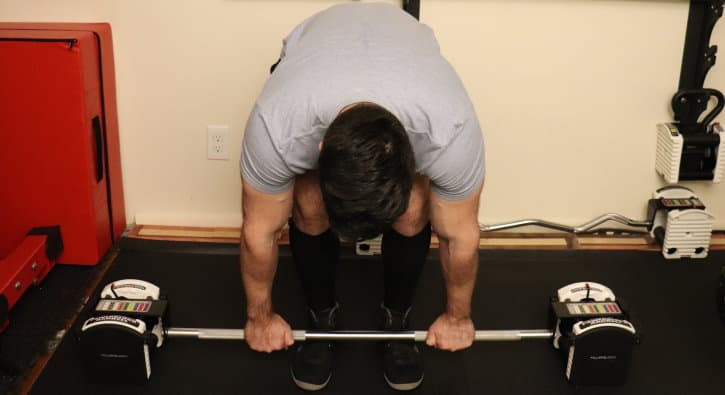
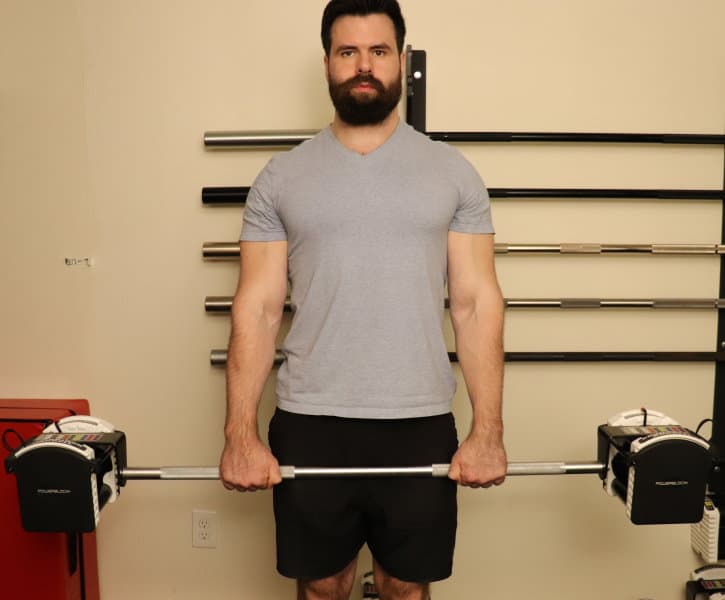
2. Concentric Movement
- Flex at the elbows to curl the bar upwards.
- Your elbows can move forward slightly as you curl up, but not so much that your shoulders take over.
- Lock your wrists to avoid excess motion.
- Exhale at the top of the concentric motion.
- Focus on a smooth and controlled motion, no rapid or jerking motions.
- Avoid arching back or using the body to generate momentum
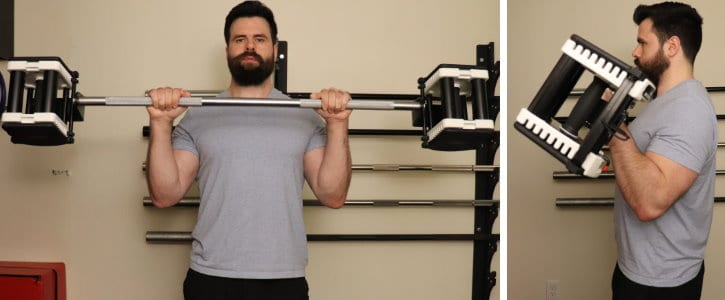
3. Midpoint
- Hold the contraction at the top of the rep for one second
- Maintain a locked wrist position. Do not slip into wrist extension or flexion to rest the weight.
- Maintain an upright posture without arching back or leaning.
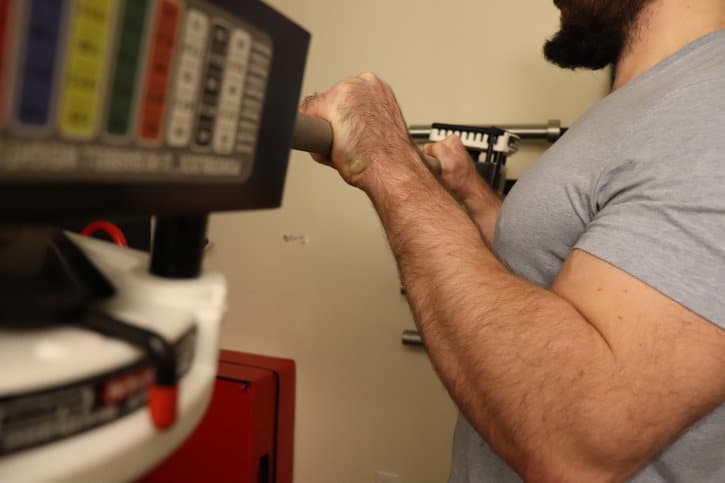
4. Eccentric Repetition
- Lower the weight slowly for 2-3 full seconds.
- Maintain a smooth, controlled tempo and motion with no rapid or jerking motions
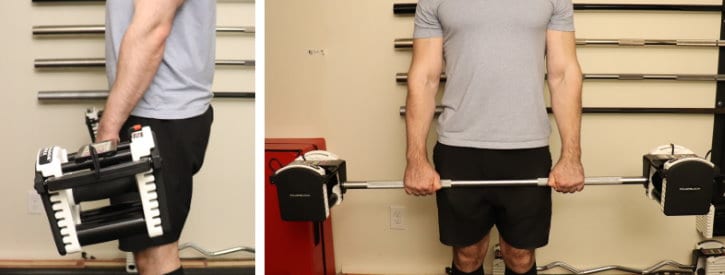
5. Repeat
- Pause at the bottom of the rep for one second.
- Inhale prior to beginning each new repetition.
Common Reverse Barbell Curl Mistakes
| Mistake | Solution |
| Arching or leaning back for momentum | Maintain an upright posture and slow tempo to avoid needing to arch or lean back to generate upward momentum. |
| Overly flexing or extending the wrists | To fully utilize the brachioradialis, attempt to keep the wrist as neutral and locked as possible. |
| Bouncing the weight or dropping it | Focus on maintaining a slow and steady tempo, with emphasis on the eccentric component to avoid dropping the weight. |
| Flaring the elbows out | Don’t allow your elbows to “wing” out. It may help to think of pinning them to you sides. They don’t necessarily have to make contact with your torso, but this cue can help prevent elbow flaring. |
Reverse Barbell Curl Tips
- Use a barbell or curl bar if possible. If you have any issues with your wrist, switch to a cambered EZ bar or even dumbbells, as these will provide a more natural wrist angle.
- Your wrists should stay neutral. There should be a straight line from you knuckles to the start of your forearm, throughout the movement.
- For additional hypertrophy of the brachioradialis, partial reps can be done at the end of a set. Specifically, this partial range of motion is from the halfway point of the concentric to the top of the concentric.
- Keep your shoulder blades at least partially contracted. This will help you to maintain a strong, upright posture.
Is the Reverse Barbell Curl Right for You?
The reverse barbell curl is a key exercise for arm and forearm strength in an oft overlooked muscle of the forearms, the brachioradialis. This is a key muscle group for forearm strength and elbow stabilization.
For athletes or lifters who require strong grip strength, the reverse barbell curl should absolutely be included. This would be appropriate for baseball players, powerlifters or Olympic lifters, and so on.
Those who have had previous elbow injuries or issues should be sure to consult with a professional who can advise on if the reverse barbell curl is suitable for them given their injury status.


